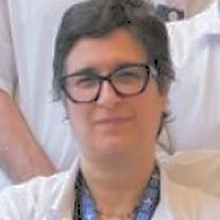Focal therapy for prostate cancer is an innovative treatment approach that consists of treating exclusively the prostate zone where the tumour is present, sparing all other parts of the gland. Suitable for localised and moderately aggressive cancers, this treatment makes it possible to reduce side effects and preserve the essential functions of the prostate, notably the urinary and sexual functions.
At the Willy Grégoir Prostate Cancer Centre we are alone in Belgium in proposing this leading edge treatment known as high intensity focal ultrasound therapy (HiFU).
HiFU therapy is suitable for patients with a prostate cancer of intermediate risk that is confined to a small and well defined area of the gland. It is an alternative for patients who wish to preserve their quality of life by reducing the risk of side effects, most notably sexual function disorders and urinary incontinence. However, this approach lacks comparative long- and medium-term data able to confirm its oncological equivalence compared to standard treatment such as surgery and radiotherapy.
Candidate patients for this treatment must present a single localised tumour of small size (less than 15 cm in diameter) with a Gleason 7 score (grade ISUP 2 and rarely 3).
HiFU therapy is based on a minimally invasive technique that therefore permits a very rapid recovery.
Pre-treatment assessment
Maximum precision is needed when planning HiFU therapy. This is made possible thanks to the prostate MRI, the mapping of prostate biopsies and a 3D ultrasound carried out at the start of the intervention. The fusion of these different images in real time makes it possible to plan and monitor the treatment in real time.
Intervention
HiFU therapy is carried out under general anaesthetic or a locoregional anaesthetic and lasts approximately 30 to 60 minutes. The ultrasound is delivered through a robotised endorectal arm that increases treatment precision. A contrast ultrasound at the end of the procedure makes it possible to check the necrosis of the tumour zone treated. A bladder probe is placed at the time of the intervention and then removed after 10 days at a consultation.
Hospitalisation
The hospitalisation is for 24 hours and includes one overnight stay.
Follow-up
Rigorous follow-up is essential to monitor treatment effectiveness and detect any recurrence of the cancer. This includes regular PSA tests, periodical MRIs and, if necessary, targeted biopsies to assess any disease progression.
TMA focal therapy has a number of advantages compared to conventional treatment: :
- Preservation of functions: By targeting exclusively the tumour, focal therapy makes it possible to preserve the urinary and sexual functions with an almost zero risk of urinary incontinence and erectile dysfunction.
- Fewer complications : This treatment is associated with a reduced risk of complications.
- Rapid recovery: Patients benefit from a more rapid recovery, often with an immediate return to normal life.
- Reproducibility: In the case of a return of the cancer or a new tumour zone, a repeat HiFU treatment is possible
HiFU therapy is generally very well tolerated, with fewer complications than in the case of traditional treatment such as surgery or radiotherapy. However, there are risks. These include local discomfort, temporary urinary problems (urinating frequently, difficulty in urinating or urinary retention) and, in rare theoretical cases, erection problems if the zone treated is close to the erectile nerves
Despite the benefits in terms of quality of life, TMA focal therapy has a major limitation: There are still insufficient comparable data in the medium and long term to demonstrate an oncological effectiveness equivalent to that of standard options such as surgery or radiotherapy. The choice for this approach must therefore be carefully discussed, taking into account the patient’s expectations and the specific characteristics of the disease.
One treatment, two options
Focal therapy for prostate cancer is based on a number of technologies that use various energy sources (ultrasound, microwaves, cyrotherapy, electroporation, etc.) and approaches (treatment of the entire gland, of a hemigland, or ultra focal targeting). This diversity permits a personalised treatment in line with the cancer characteristics and patient’s expectations. However, it complicates the direct comparison of strategies as each method has specific advantages and limitations with no single approach being identified as superior to the others.
At the Willy Grégoir Prostate Cancer Centre we have been committed for than two decades to developing these technologies and have been actively involved in disseminating them around the world. Our choice was initially for treatment with HIFU, with our first treatment carried out more than 20 years ago, and then more recently TMA.
High intensity focused ultrasound (HIFU) is one of the most studied techniques and has been marketed worldwide for more than 30 years. It is recognised for its flexibility that permits a number of treatment approaches (full gland, hemigland, or ultra focal) and is robot assisted for maximum precision.
Although more recent, TMA has some notable advantages. Patients are mildly sedated and it integrates perfectly with the KOELIS Trinity® platform that provides optimal synergy between the biopsy mapping and targeted therapy. Limited to an ultra-focal approach, this technique is distinctive for its simplicity and the absence of any major difficulty in the case of a subsequent switch to a radical prostactectomy.
